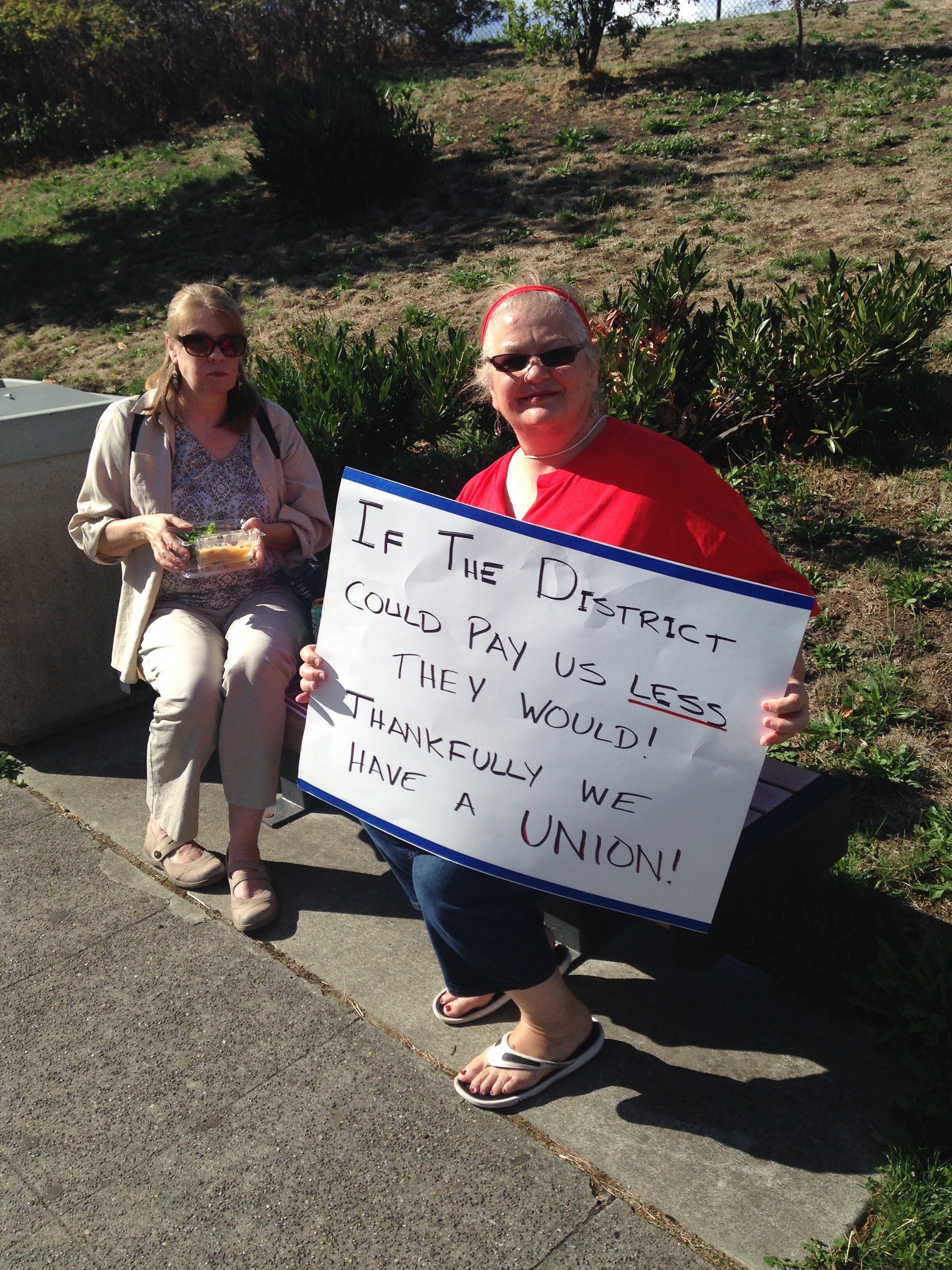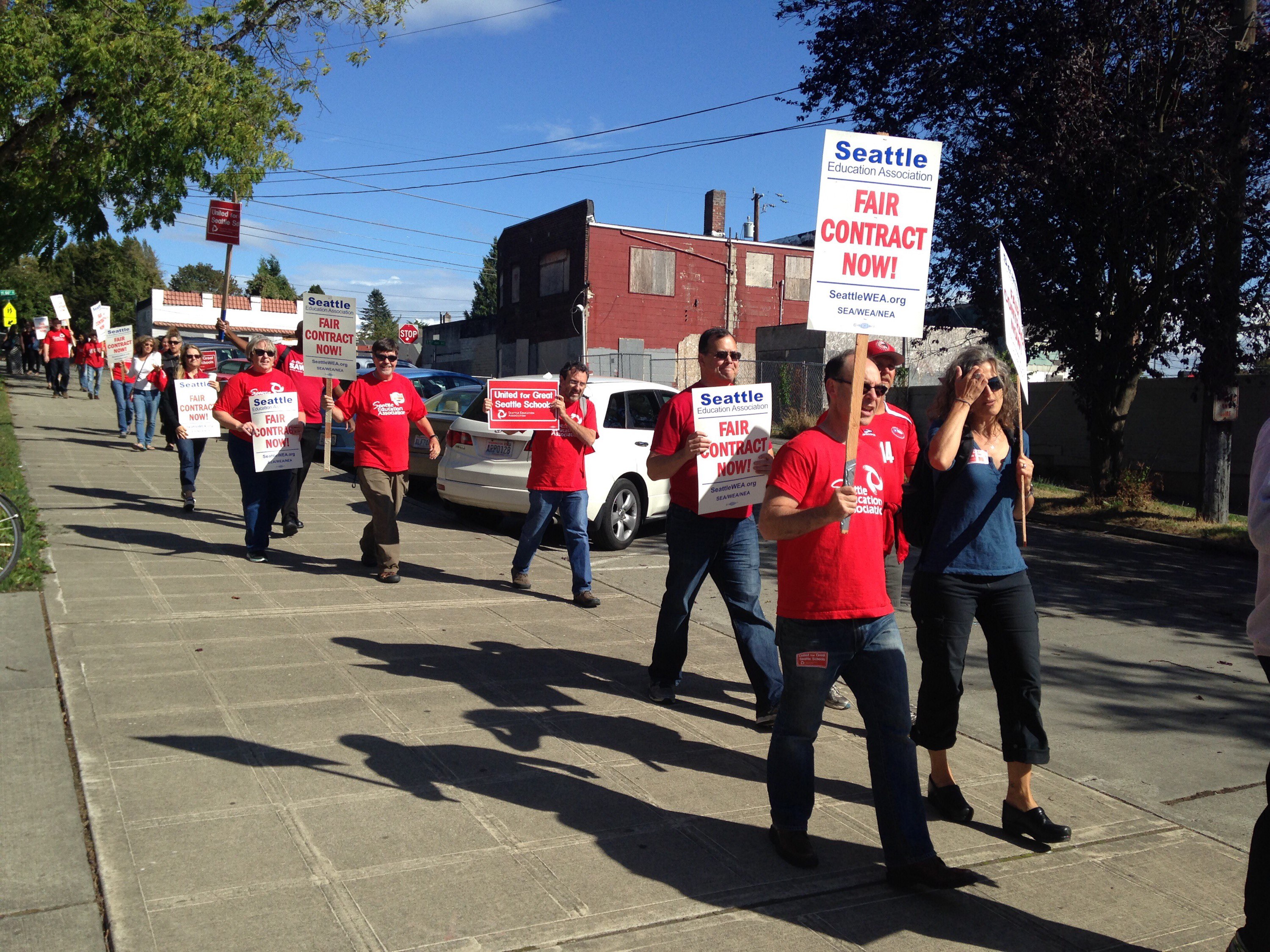In a demonstration outside Roosevelt late Wednesday afternoon, local teachers marched through the streets bearing picket signs and sporting bright-red union t-shirts. The picketing comes as the result of months of contract negotiation between the Seattle School District and the teachers’ union. However, despite meeting over 20 times since May, no compromise has been reached and teachers remain without a contract less than a week out from the first day of school. This afternoon, they’ll vote on whether or not to strike in protest.
“We are here today because for the last three months, we’ve been bargaining with the district in good faith,” said Roosevelt science teacher Mark Landreville. “We’ve put in a lot of time with proposals which will actually help improve the quality of education in Seattle schools, things that will help students, and not only has the district rejected all of these things, but the district hasn’t come up with any substantial proposals of their own.”
This perspective is shared by Roosevelt social studies and health teacher and acting picket captain Kara Macdonald: “The report from the bargaining team was that [the district] really didn’t come to the table with anything until the end of August.”
She continued, “It seemed like they didn’t have a coordinated effort, or hadn’t really put any effort into thoughtful ideas or counterproposals. A bargain is a compromise, so you have to put something on the table in order to make a compromise. You can’t just listen to one side and say ‘no’.”
Main points of contention include teacher salary, length of recess for elementary students, and a school day that lasts 30 minutes longer with no extra pay for educators.

“They want us to put in more time without getting paid for it,” explained Landreville. “They are proposing that they’re giving us a raise, but that doesn’t even cover cost of living or the increase in our health care cost. Everybody’s health insurance is going up quite a bit.”
Seattle educators have not received a cost-of-living-adjustment (COLA) to their salaries in six years. Seattle’s costliness means a growing number of teachers are unable to live inside the school district they work for.
The school board has proposed a pay increase of 13% over the next three years, while union representatives are calling for a raise of 21% instead. Union activists have pointed out that the district received an extra $40 million in state funding this year on top of its already-sizeable reserve funds.
“[Seattle schools] consistently have larger reserves, larger amounts of money left over than they plan for in the budget,” said Jonathan Knapp, president of the Seattle Education Association. “For the last six years, at least, they’ve consistently had about $20 million more left over at the end of the year than they projected to have left in reserves.”
Yesterday’s demonstrations were held at nine Seattle public high schools across Seattle; now, teachers will put down their picket signs and decide if they will strike.
“I don’t think there’s any doubt on what the outcome is going to be tomorrow,” said Knapp. “It’s very clear that our members are very firm about what they need. […] The district needs to take that seriously.”
“I expect that we will vote to strike,” remarked Roosevelt social studies teacher Janine Magidman. “I think the momentum is there, but I’m hoping that that’s enough to convince the district.”
She continued, “I would love to not be on strike. I would love to come in and start school on time.”
No matter what tomorrow’s vote brings, today’s demonstrations came tinged with an air of expectation. In a single file march, the carefree sounds of reunited colleagues intermingled with chants for a fair contract (“When do we want it? “Yesterday!” quipped one teacher), allowing catharsis for coworkers vocalizing their collective frustrations.
At one point, a single voice rose above the noise. Decked out in the same unifying red t-shirt as his peers, a male demonstrator yelled, “Single file!”, directing the group onwards. “This is strike practice.”
Featured Photos: Educators and supporters alike make their way around the Roosevelt neighborhood. Photo by Karinna Gerhardt
